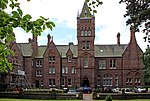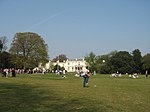Bluecoat Press
Bluecoat Press is a publisher based in Liverpool, England. Established in 1992. Bluecoat Press takes its name from the Bluecoat Chambers, where it was based from 1992 until 2005. Founded by Colin Wilkinson, it specialised in mainly local and regional (Liverpool and NW England) books with an emphasis on photography. Following changes in the book market after the financial crisis in 2008, which saw the demise of most local bookshops, Bluecoat Press shifted its emphasis to books about photojournalism - publishing monographs by photographers including John Bulmer, Peter Dench, Paul Trevor and Patrick Ward. Bluecoat Press has published over 200 books on subjects ranging from local history, food, art and architecture and autobiographies to the ghost stories of local writer Tom Slemen. It has greatly reduced its output in recent years, publishing around six titles a year.
Excerpt from the Wikipedia article Bluecoat Press (License: CC BY-SA 3.0, Authors).Bluecoat Press
The Vineries, Liverpool Woolton
Geographical coordinates (GPS) Address Nearby Places Show on map
Geographical coordinates (GPS)
| Latitude | Longitude |
|---|---|
| N 53.376555555556 ° | E -2.8832777777778 ° |
Address
The Vineries
The Vineries
L25 6EX Liverpool, Woolton
England, United Kingdom
Open on Google Maps








